Event Review: Inaugural Members Open Day – October 2017
Opening Address: Professor Ali Hessami, Chair UK and Ireland Section
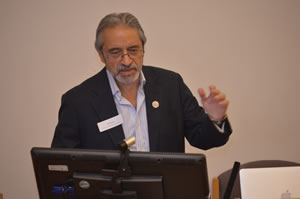 To deliver member value, it is necessary to understand the members needs and expectations that goes beyond the usual electronic communications and society membership. To this end and to provide the opportunity to all section membership to meet, network and engage with the section’s initiatives and leadership, the concept of an Open Day was conceived and put forward.
To deliver member value, it is necessary to understand the members needs and expectations that goes beyond the usual electronic communications and society membership. To this end and to provide the opportunity to all section membership to meet, network and engage with the section’s initiatives and leadership, the concept of an Open Day was conceived and put forward.
With the active and generous support from the University of Westminster and efforts of Prof Izzet Kale, IEEE section in the UK and Ireland held their first Members’ Open Day on 7th October 2017. The Chair welcomed the participants, members, section officers, guests and invited speakers and gave an overview of the section’s initiatives for enhanced member value, transparency, accountability and progression.
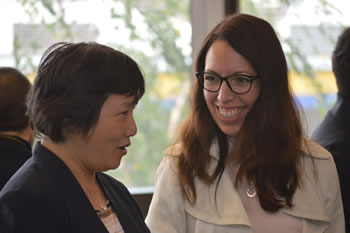
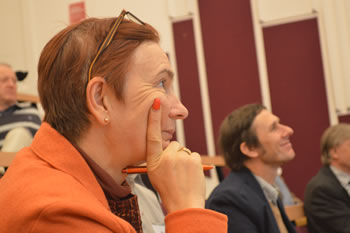
Keynote Address: ARMS to Brains, Professor Steve Furber
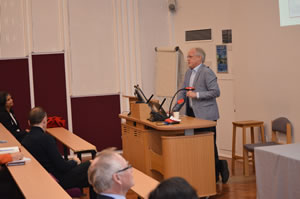 Developing the technology and capacity to mimic the brain of a mouse using neuromorphic computing was the exciting topic of the keynote lecture given by the visionary Professor Steve Furber. With background in chip design and system on a chip dating back to his days at Acorn Computers, Steve highlighted the challenges in understanding the complexities of the human brain and developing computing capacity to mimic its building blocks, topology and functions.
Developing the technology and capacity to mimic the brain of a mouse using neuromorphic computing was the exciting topic of the keynote lecture given by the visionary Professor Steve Furber. With background in chip design and system on a chip dating back to his days at Acorn Computers, Steve highlighted the challenges in understanding the complexities of the human brain and developing computing capacity to mimic its building blocks, topology and functions.
A neuromorphic computer with 100k processors per rack has been developed by Steve’s team aiming towards 1 million cores that would approach the emulation capability for a mouse brain. However, the human brain is 1000 times larger than this and nobody even knows how to use the current 0.5 M cores to emulate the topology. There’s a need for researchers to think big and come up with innovative approaches to exploit the current and emerging neuromorphic capabilities.
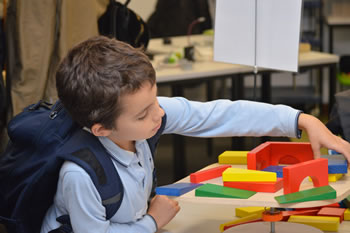
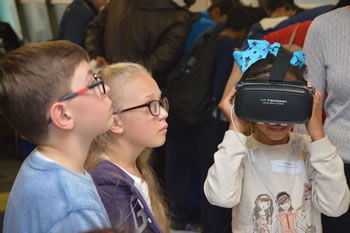
Trust me I’m an Engineer was the landscape painted by Professor Merlyne De Souza, the STEM Officer for the IEEE UK and Ireland Section. She elaborated on the significance of the STEM to enthuse the younger generation and gave an overview of the strategy that the IEEE UK & Ireland STEM committee have adopted for activities, a website and collaboration with other stakeholders.
Merlyne also gave an overview of the STEM workshop that was taking place with many invited schools on the same afternoon. The school liaison and invitations had been organised by the University of Westminster’s Outreach team who partnered with IEEE to turn the workshop a memorable day for the participating children and parents alike.
Artificial Intelligence and Ethics
 The afternoon session commenced with a panel discussion on Ethics in Technology, exploring the social and ethical implications of Artificial Intelligence. The panel comprising Dr Keeley Crockett, Prof Mike Hinchey and Ali Hessami and chaired by Ansgar Koene explored the ethical issues around advancing technology.
The afternoon session commenced with a panel discussion on Ethics in Technology, exploring the social and ethical implications of Artificial Intelligence. The panel comprising Dr Keeley Crockett, Prof Mike Hinchey and Ali Hessami and chaired by Ansgar Koene explored the ethical issues around advancing technology.
The section leaders for the Student Activities (Veronika Nesheva and Lee Crudgington), Young Professionals (Noel Gomes) and Women in Engineering (Keeley Crockett and Princy Johnston) gave an overview of their roles, vision, plans, existing initiatives and achievements in developing services for the specific groups.
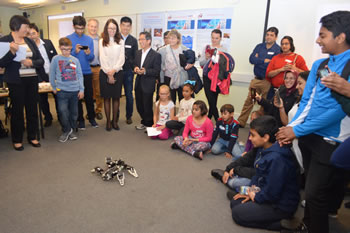
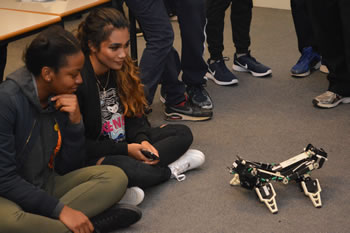
Robotics for Humanity Competition
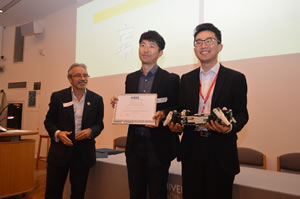
The RAS Chapter executive and the invited judges at the Robotics for Humanity competition had presentations from the short-listed candidates all afternoon. The Competition assessment panel included five members:
Prof John Gray, Chair of IEEE UK & Ireland RAS chapter, University of Manchester
Prof Kaspar Althoefer, Committee Member of IEEE & Ireland RAS chapter, Queen Mary University of London
Dr Mary He, Secretary of IEEE UK & Ireland RAS chapter, Cranfield University
Dr Helge Wurdemann, University College London
Dr Jelizaveta Konstantinova, Queen Mary University of London
The Winner was awarded to the team of Metamorphic Walker, put forward by Shungjia Xu and Cheng Peng from Kings College London. Metamorphic Walker is a novel metamorphic biomimetic quadruped robot with varying topology and mobility to adapt to different working conditions.

